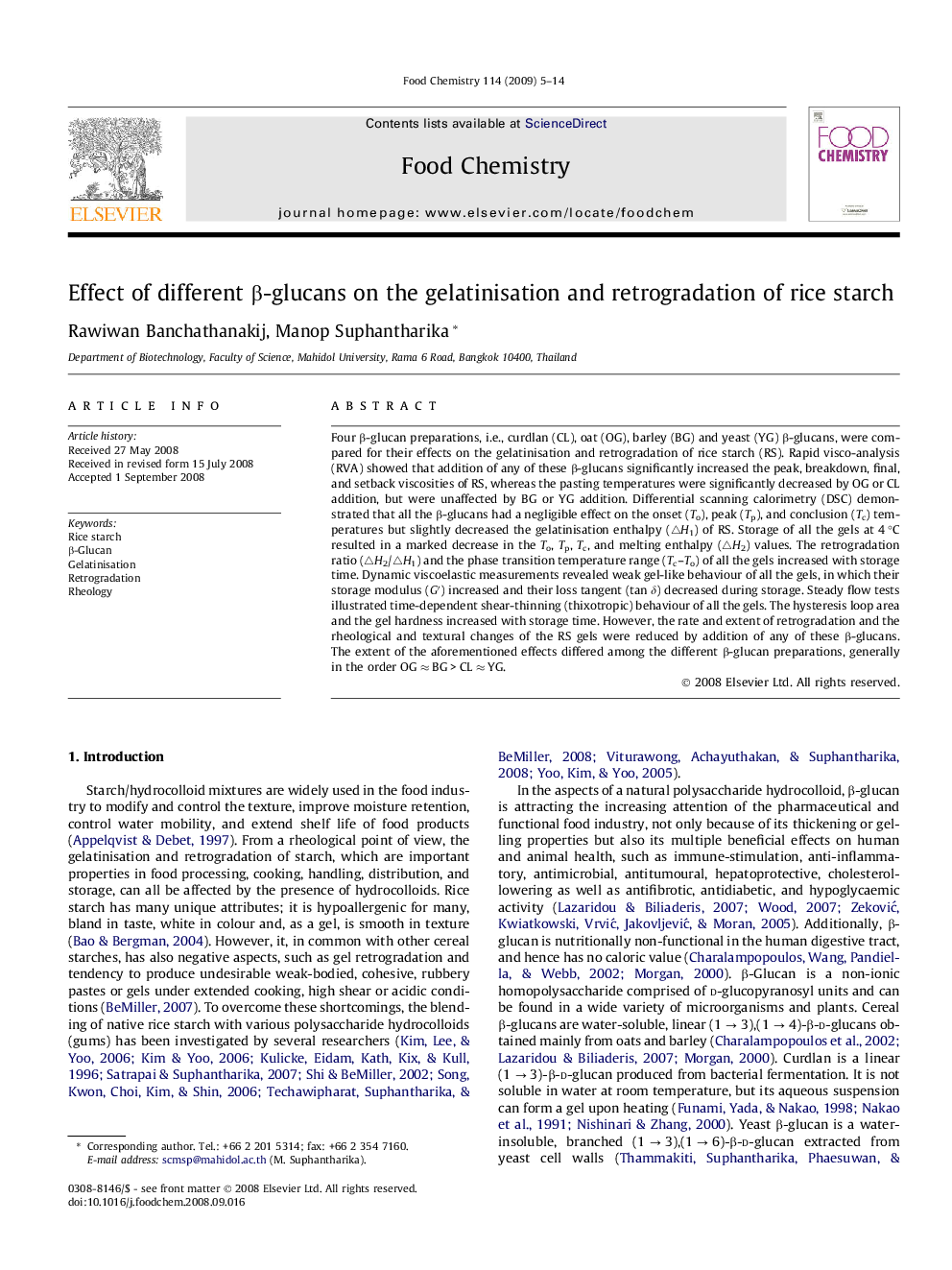| Article ID | Journal | Published Year | Pages | File Type |
|---|---|---|---|---|
| 1188724 | Food Chemistry | 2009 | 10 Pages |
Four β-glucan preparations, i.e., curdlan (CL), oat (OG), barley (BG) and yeast (YG) β-glucans, were compared for their effects on the gelatinisation and retrogradation of rice starch (RS). Rapid visco-analysis (RVA) showed that addition of any of these β-glucans significantly increased the peak, breakdown, final, and setback viscosities of RS, whereas the pasting temperatures were significantly decreased by OG or CL addition, but were unaffected by BG or YG addition. Differential scanning calorimetry (DSC) demonstrated that all the β-glucans had a negligible effect on the onset (To), peak (Tp), and conclusion (Tc) temperatures but slightly decreased the gelatinisation enthalpy (△H1) of RS. Storage of all the gels at 4 °C resulted in a marked decrease in the To, Tp, Tc, and melting enthalpy (△H2) values. The retrogradation ratio (△H2/△H1) and the phase transition temperature range (Tc–To) of all the gels increased with storage time. Dynamic viscoelastic measurements revealed weak gel-like behaviour of all the gels, in which their storage modulus (G′) increased and their loss tangent (tan δ) decreased during storage. Steady flow tests illustrated time-dependent shear-thinning (thixotropic) behaviour of all the gels. The hysteresis loop area and the gel hardness increased with storage time. However, the rate and extent of retrogradation and the rheological and textural changes of the RS gels were reduced by addition of any of these β-glucans. The extent of the aforementioned effects differed among the different β-glucan preparations, generally in the order OG ≈ BG > CL ≈ YG.
